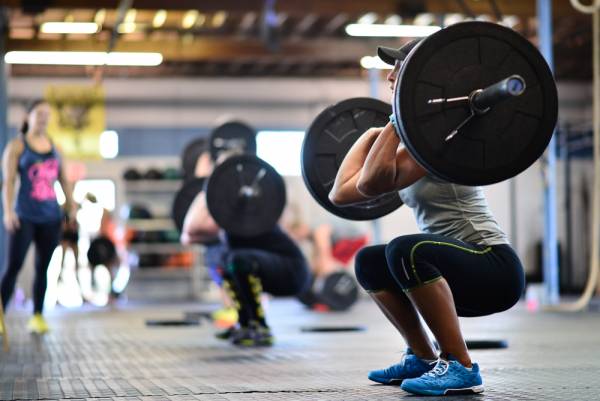The Internet is a full of freely distributed information, how-to instructional videos, and a seemingly infinite number of cats being jerks and sitting in strange places.
While free exchange of information is mostly a good thing, it can sometimes lead to a lack of context. As humans, we tend to search for absolute truths.
The Internet is a full of freely distributed information, how-to instructional videos, and a seemingly infinite number of cats being jerks and sitting in strange places.
While free exchange of information is mostly a good thing, it can sometimes lead to a lack of context. As humans, we tend to search for absolute truths.
It’s why we invest so heavily in scientific investigations. Unfortunately, this means every now and then people take a good idea and turn it into dogma – a principle laid down by an authority that is incontrovertibly true. This becomes problematic when the authority’s intention was not for that idea to be applied universally.
I’m going to address two of the most common misconceptions about movement, as well as where they come from, why they’re important to acknowledge, and what they really mean.
“If you’re thinking about it, you’re doing it wrong.”
These days everyone’s concerned about healthy movement patterns and how to achieve them.
For the most part, this is a good thing. My experience in the clinic has shown me that the majority of people’s daily aches and pains and non-contact sports injuries can be treated and prevented through the improvement of basic movement patterns.
Postural alignment is the foundation of proper movement. If you don’t start with good alignment, it’s almost impossible that you will be able to reclaim and utilize good alignment halfway during your movement.
Kelly Starrett and his website MobilityWOD have opened a lot of peoples’ eyes to the power of mobility and healthy movement capacity. As a practitioner, he harps on proper posture.
It’s almost his thing. Recently, there’s been something of a backlash against his methods, the primary criticism being that he wants us to think about our movement too much.
There is some truth to this. In his book, Becoming a Supple Leopard, Starrett advises that people take the time to “get organized” while they’re sitting, standing, or doing anything.
In fact, he makes the pretty hard-nosed recommendation that if you work a desk job, you should stop and consciously reset your posture about once every fifteen minutes.
That’s right. He wants you to consciously and deliberately focus on changing your posture a minimum of four times an hour.
Understandably, this annoys some other practitioners in the field. Many claim that posture and proper alignment should be reflexive. It should happen naturally and without conscious effort.
After all, how can you be expected to perform complex athletic tasks if your mind is already devoted to maintaining postural alignment?

The problem is this: movement patterns, while ultimately unconscious, necessarily originate from a realm of conscious and deliberate focus.
When Floyd Mayweather throws a jab, my guess is he doesn’t think a whole lot about the musculoskeletal mechanics of it. He has also likely thrown several million jabs at this point in his career.
He has hammered that pattern into his nervous system through the use of deliberate training. I don’t know at what point that motion went from conscious to reflexive, and my guess is he probably couldn’t point out a specific day or training session where it happened either.
The same can be said for almost any sport-specific movement. Professional quarterbacks don’t spend as much time on throwing mechanics compared to aspiring adolescent and teenage athletes. The reason should be obvious – they can already throw pretty well.
They focused on the mechanics early on and as a result that pattern is now reflexive. Even so, before it was unconscious it was conscious and deliberate. That’s how movement patterns are created.
When people complain that we shouldn’t work muscles in isolation (the way many corrective exercises do) or that movements shouldn’t be so conscious, they’re missing the point. Ideally, sure.
The problem is that the whole reason this person is doing the exercises and thinking his or her posture is because he or she sucks at them.
When it comes to basic movement, this person is about as adept as a peewee quarterback in the first season. Some day those techniques will flow. But until then, people need to consciously practice them.
Maybe every fifteen minutes, if that’s what it takes.
“There’s no such thing as perfect form.”
This particular claim really gets to me. Again, the problem isn’t that it’s untrue. In a certain respect it is.
There is absolutely not one universal perfect form for every exercise that can be utilized by every individual.
People are all different and we all have different skeletons and slightly different muscular structures.
We all have our own individualized system of levers to work with, which means that one person’s “perfect” will not be your “perfect.” That doesn’t mean that such a thing can’t exist ever in any context.

If you listen to a lot of the great lifters in any strength sport it’s pretty clear that proper technique is paramount. They just identify perfect technique a bit differently than some of us.
For them, “perfect” is task specific. A perfect squat for a powerlifter will be different than a perfect squat for an Olympic lifter, just as a perfect squat for a short, stocky powerlifter will be different than a perfect squat for a tall, lanky powerlifter.
I realize some of this is just semantics. Where it becomes important is when many people (particularly beginners) latch onto the notion that perfect form doesn’t exist and use it as an excuse to embrace technique that would make deadlifting in high heels seem safe by comparison. Again, the point isn’t necessarily that you must have absolutely perfect form on every single repetition of every lift.
The point is that for your body and your goals, there is a technical ideal for which you should be striving.
Perfect form is more complex than just your specific musculoskeletal lever system. It’s also specific to your training goals. Within this context I would levy that perfect form arises from the following three principles:
- Perfect form utilizes your specific lever system to its greatest level of efficiency.
- Perfect form spares your body from undue stress, harm, and risk of injury.
- Perfect form is specifically suited to your training and competition goals.
This means there are a plethora of perfect forms available for you in any movement you pursue and frequently attaining means going after a moving target. It’s entirely possible you may never regularly hit that perfect technical ideal. That doesn’t mean you shouldn’t strive to do so.
While I think the fitness industry is moving in the right direction, the ideas of movement and motor patterning are still somewhat new and therefore prone to misunderstanding.
Hopefully this article helped clear up some misconceptions for you. Now go practice your perfect posture. It’s been fifteen minutes.
Photos 1&2 courtesy of Shutterstock.
Photo 3 courtesy of CrossFit Empirical.






